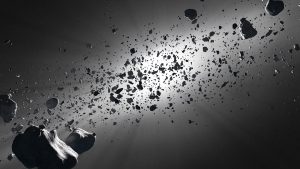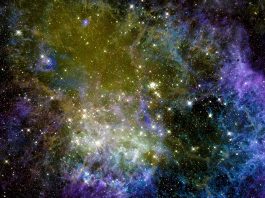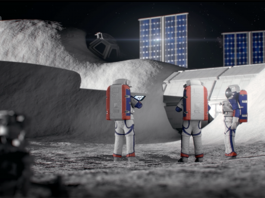When natural impacts occur in space, asteroid debris flies off at the point of collision between the objects.
The tail of particles that form from the asteroid debris can help determine its physical characteristics. NASA’s Double Asteroid Redirection Test mission enabled a team of scientists to observe this phenomenon as it happened for the first time.
The study, ‘Ejecta from the DART-produced active asteroid Dimorphos,’ is published in the journal Nature and focused on the Hubble Space Telescope’s measurements of the asteroid’s ejecta, beginning 15 minutes after the impact to 18.5 days after the impact. A video details its exact evolution and how it changed over time.
Why is the study of debris important in space exploration?
“My work on this mission so far has been to study the heliocentric changes to the orbit of Didymos and its smaller moon Dimorphos—the target of the DART spacecraft,” said Rahil Makadia, a PhD student in the Department of Aerospace Engineering at the University of Illinois
“Even though it hit the secondary, there are still some changes in the entire system’s orbit around the Sun because it feels the impact’s consequences. The ejecta that escapes the system provides an extra boost besides the impact. So, to accurately determine where the system will be in 100 years, you need to know the contribution of the asteroid debris that escaped the system.”
The team observed a 33-minute change in the orbit after DART’s impact. If no asteroid debris were present, the period change would have been less than 33 minutes. However, because some ejecta escaped the gravitational pull of Dimorphos, the orbit period change is higher than if there were no ejecta at all.

Makadia explained: “After a few days, the primary force acting on these asteroid debris particles becomes solar radiation pressure. The photons emitted from the Sun exert an acceleration on these small particles, and they evolve into a straight tail in an anti-solar direction.
“There have been cases in which it was determined that a natural impact caused the observed active asteroid. But because this one was very much intended, we could have telescopes pointed at it before and after the impact and study its evolution.”
The data about how asteroid debris evolves will be used to understand how the entire system’s orbit changes. Makadia commented: “Now that we have this treasure trove of data, we can make educated guesses about other tails we might observe.
“Depending on what kind of particles are in the tail and their sizes, we can figure out how long ago that impact happened. We will also be able to understand the ejecta that escape the system and change the entire system’s heliocentric orbit.”
Using computational methods to observe simulations
The entire study of the asteroid debris was based on computational simulations. Makadia said: “To calculate where an asteroid will be on a given date, we need to propagate all the possible locations that the asteroid could be at an initial time, not just one nominal solution.
“That requires a lot of computational power and understanding of how orbits are affected by small forces, like solar radiation pressure, as well as gravity from all kinds of sources within the Solar System.”
He concluded: “I developed simulations to study the heliocentric changes when I started working on my PhD to ensure we have a propagator that can impart all these impulses that are coming from the escaping debris. Now I’m developing an orbit determination tool, so once we have enough observations, we can extract this information about the heliocentric change to the system.”









